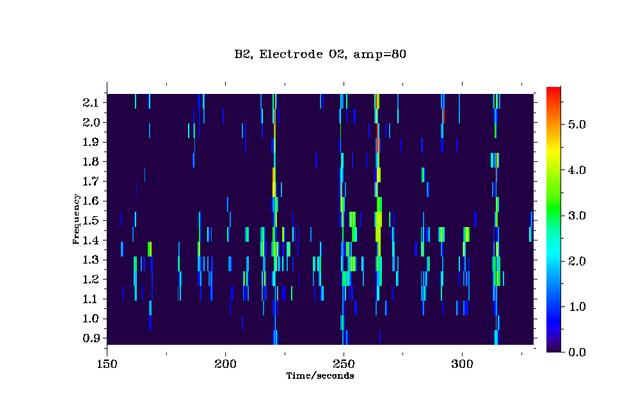
arriba: Información sobre profesorado
| Correo electrónico | baier{at}servm.fc.uaem.mx |
| Temas |
|
| Posibles tesis |
|
| Tesis recientes |
|
| Descripción investigaciones | Se analisan electroencefalogramas de niños con epilepsia. Desarrollamos nuevos métodos para detectar cambios sospechosos que permiten predecir un ataque. Nos interesa el mecanismo de la transición: ¿cómo es que un sistema tan complejo logra cambiar su dínamica completamente en unos pocos segundos? |
| Referencias |
|

Ritmicidad de la actividad cerebral de un niño con epilepsia
arriba: Información sobre profesorado
Página preparada por W. Luis Mochán, http://em.fis.unam.mx/~mochan el dia 8 de marzo, 2004, a las 19:50:37